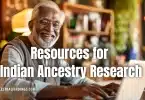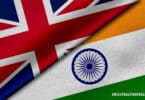India is a land of rich oral traditions, where stories, myths, and family histories are often passed down from generation to generation by word of mouth. These oral histories have been the foundation of preserving family legacies, especially in rural areas where written records were scarce or non-existent. While the digital age has made it easier to document and archive personal histories, many Indian families still rely on the oral transmission of their past.
Oral histories are invaluable for genealogists and anyone interested in tracing their ancestry. They offer insights that can’t be found in written records, connecting modern generations to their ancestors’ experiences, values, and struggles. But oral histories are fragile. They fade with time, and each generation can lose valuable information. That’s why it’s so important to capture, preserve, and verify these stories while they’re still accessible.
The Importance of Oral Histories in Indian Genealogy
Oral histories have been an essential part of Indian family life for centuries. In many villages, the older members of the family—usually grandparents or great-grandparents—were the keepers of family lore. These people could recite ancestors’ names, recall marriages and migrations, and vividly describe family connections. These stories were often shared during festivals, religious ceremonies, or casual gatherings, becoming part of the family’s collective memory.
For many families, oral histories are the only source of information about their past. In rural parts of India, especially before the introduction of widespread record-keeping, written documents such as birth, marriage, and death certificates were rare. As a result, many families relied solely on oral tradition to remember important dates and events.
Oral histories are not just about dates and names. They carry the emotions, struggles, and achievements of past generations. A story might reveal how an ancestor braved a migration during the Partition of India, how the family survived periods of famine, or how a relative played a crucial role in a community’s religious or cultural life. These stories are often personal and unique, offering a richer, more nuanced understanding of the past than any written document can provide.
How to Capture Oral Histories from Family Members
Collecting oral histories from family members is a process that requires patience, sensitivity, and a bit of planning. Here’s how to approach it:
Identify the Elders: Identify the people in your family with the most knowledge about your family history. This is usually the oldest generation, but sometimes, younger family members may also know significant stories.
Create the Right Environment: When asking elders to share their memories, creating a comfortable, relaxed setting is important. Make them feel at ease so they’re more willing to open up. Don’t rush the process. Conversations over a cup of tea or during a family gathering can be ideal.
Ask Open-Ended Questions: Avoid questions that can be answered with a simple “yes” or “no.” Instead, ask open-ended questions like, “Can you tell me about how our family came to live in this village?” or “What was life like when you were growing up?” These types of questions encourage storytelling and often lead to more personal and revealing details.
Record the Conversations: Recording these conversations is crucial. Use your phone, a recorder, or even video if possible. This way, you’ll have a permanent record of the stories, which can be passed down to future generations. Be sure to ask permission before recording, and explain why you’re doing it.
Follow the Story’s Leads: Oral histories often contain clues that can lead to further discoveries. For example, if a relative mentions an event or a location, you can follow up with research to verify and expand on the story. Perhaps there are old photos, letters, or religious documents that can support what you’ve been told.
The Challenges of Oral Histories
While oral histories are a treasure trove of information, they do come with challenges. Memories fade over time, and each retelling can embellish or alter stories. This doesn’t mean the information is unreliable, but it’s important to approach oral histories with a healthy amount of verification.
Cross-referencing oral histories with written records can be incredibly helpful. For example, if a family story mentions an ancestor’s involvement in a historical event like the Indian independence movement or the Partition, you can consult historical documents or archives to confirm those details.
Another challenge is the cultural context in which these stories were told. Many oral histories include symbolic or exaggerated details to teach family values or preserve honor. It’s important to recognize these cultural nuances and not dismiss the stories because they don’t align perfectly with facts.
Verifying and Expanding Oral Histories
Verification is an essential part of preserving oral histories. One effective way to do this is by cross-referencing oral stories with local records or religious archives. For instance, if your family has a long association with a particular temple, mosque, or gurdwara, the priests or religious leaders there may have records that validate or expand on the oral history. Many temples in India, particularly in South India, maintain genealogical records for families that have been connected to them for generations.
Another way to verify stories is to seek out local historians or community elders who may know of broader historical events mentioned in your family’s stories. These people often have access to community archives, regional records, or even folk histories that could shed light on your family’s past.
For example, a family story about migration during the Partition may be corroborated by local migration records, community-based archives, or even British or Indian government records from that time. Oral histories can also provide leads that help genealogists explore other sources, such as land records, legal disputes, or local newspaper archives.
The Emotional Value of Oral Histories
The beauty of oral histories lies in their ability to connect us emotionally with our ancestors. These stories often contain the heart of a family’s identity. They convey struggles, joys, and the experiences that shaped the people who came before us. While written records give us dates and facts, oral histories give us stories of human resilience, love, and sacrifice.
Preserving these stories isn’t just about gathering genealogical information—it’s about safeguarding the emotional core of your family’s legacy. When you listen to an elder recount their memories, you’re not just hearing about events—you’re experiencing the emotions, the pride, and the pain that come with them.
How to Preserve Oral Histories
Once you’ve gathered and verified the stories, preserving them for future generations is essential. Digital tools can be a huge help here. Recordings can be stored in cloud services, ensuring they aren’t lost over time. You can also transcribe the stories and share them as written records with family members. Some families even create family books or websites dedicated to preserving and sharing their oral histories.
If you feel your oral histories are of wider historical significance, consider donating them to local or national archives. Many institutions, such as the National Archives of India or regional cultural centers, accept family histories to preserve local and national heritage.
Oral histories are an irreplaceable part of Indian genealogy. They connect us to our ancestors in ways that written records often cannot. By capturing, verifying, and preserving these stories, we ensure that the voices of our ancestors continue to resonate with future generations. In a country as diverse and historically rich as India, these oral traditions help us understand where we come from, who we are, and how we fit into the larger fabric of history.






